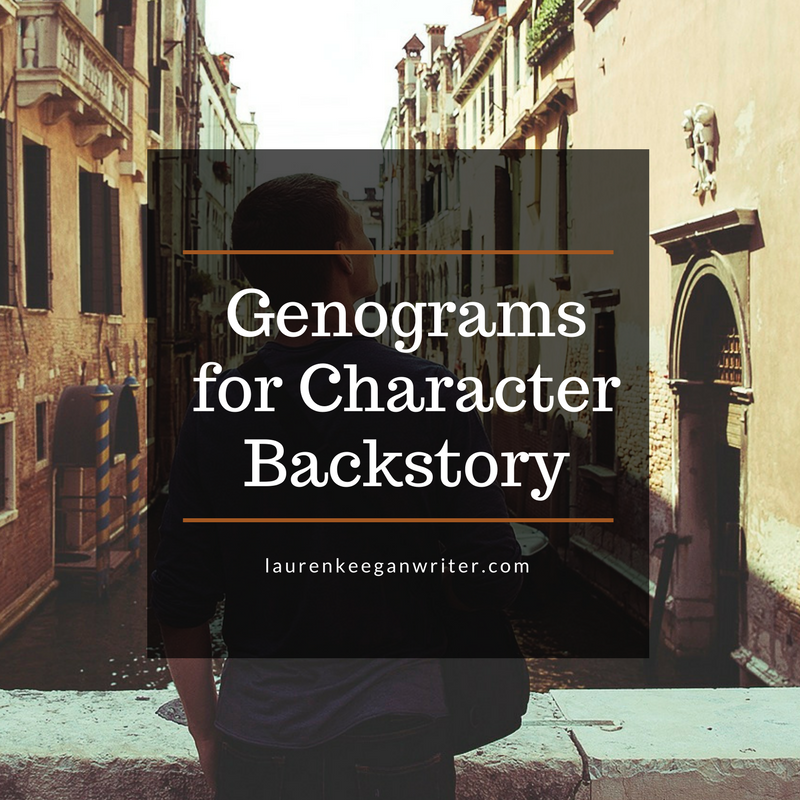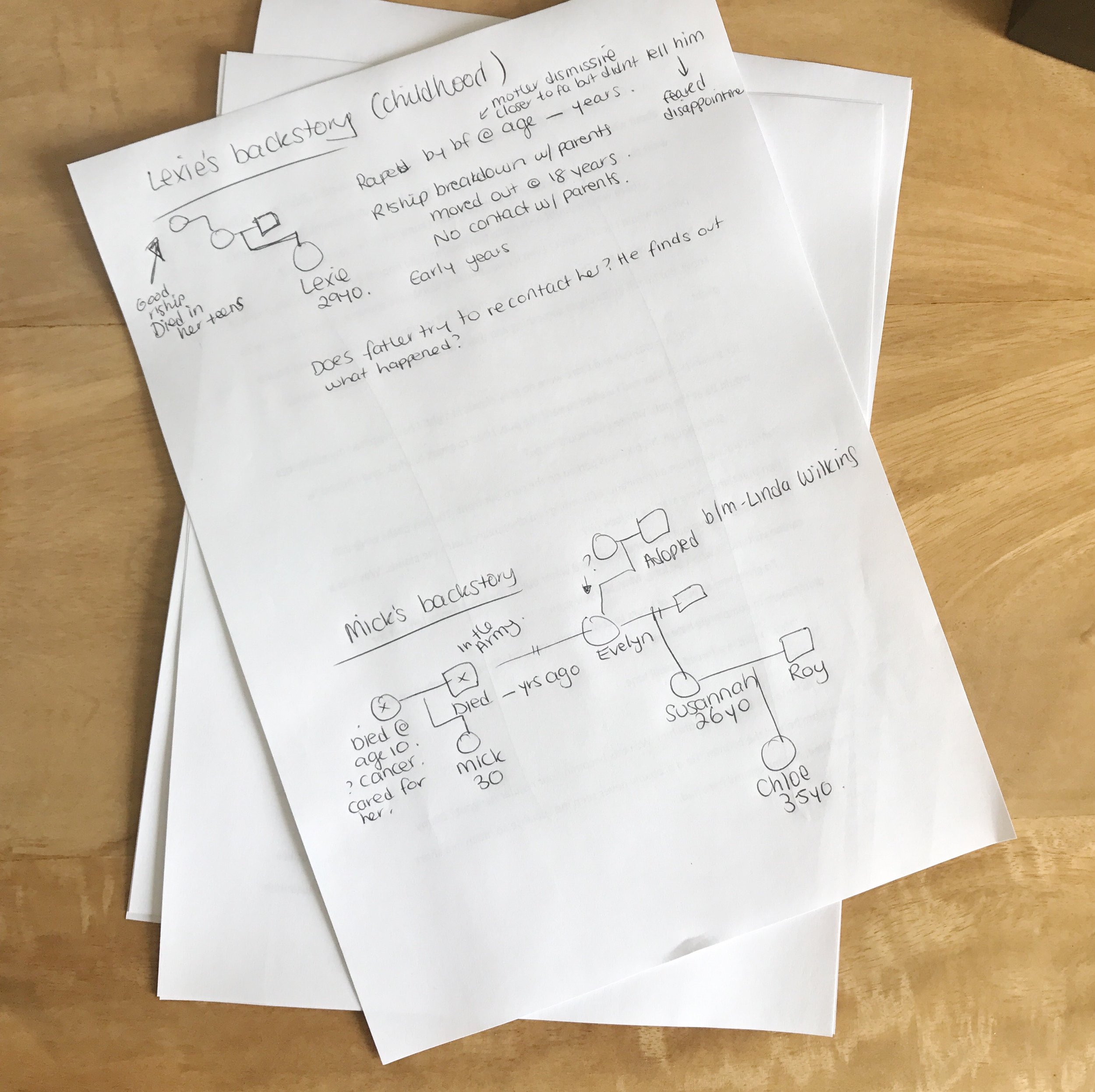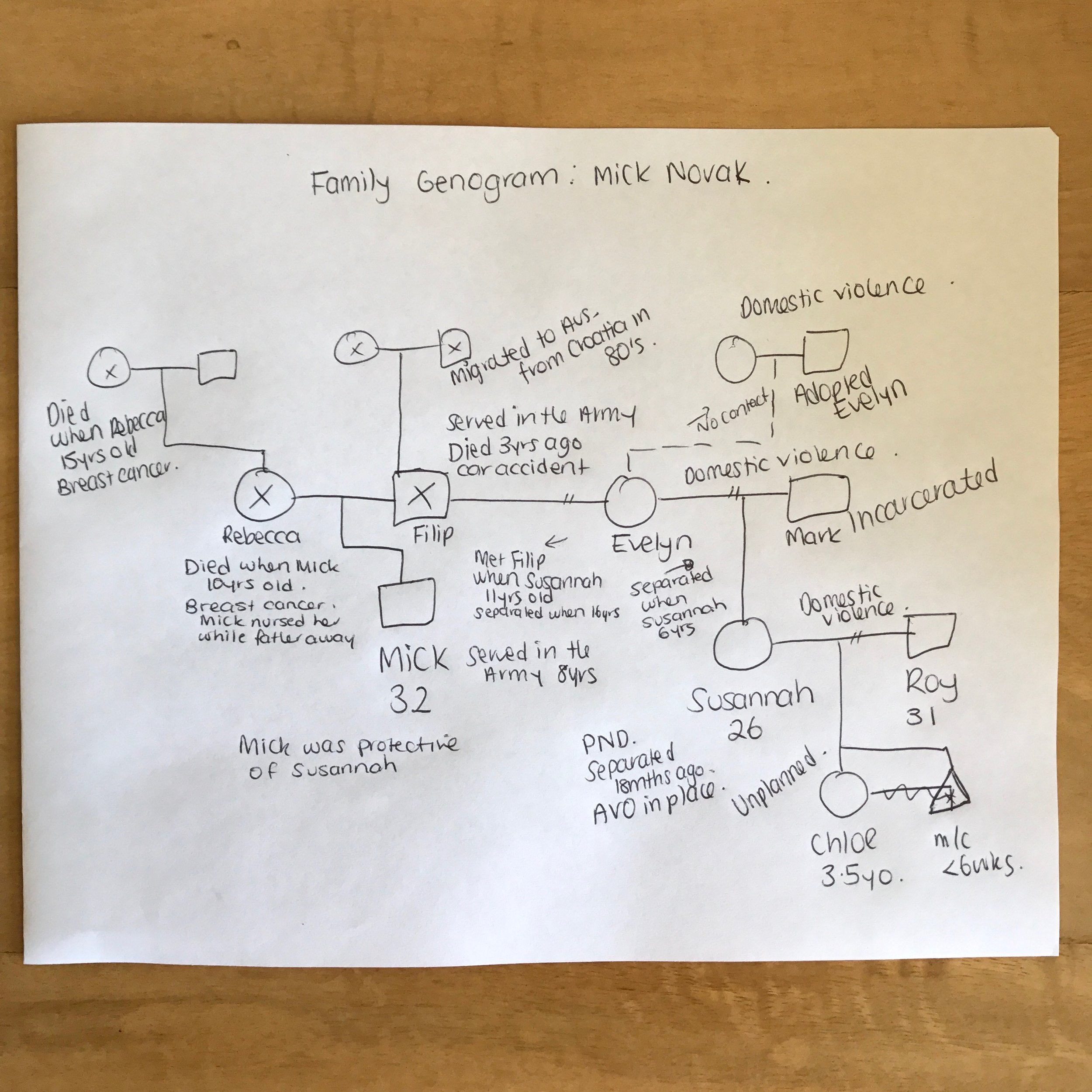How to use a Genogram to Create Character Backstory
 How to use a Genogram to Create Character Backstory (an introduction)I put the following snapshot on Instagram of a genogram I was developing for my characters while editing my current WIP. It gained some interest from other writers who wanted to know how to apply it to fiction.
How to use a Genogram to Create Character Backstory (an introduction)I put the following snapshot on Instagram of a genogram I was developing for my characters while editing my current WIP. It gained some interest from other writers who wanted to know how to apply it to fiction. In my day job, I work as a psychologist in perinatal and infant mental health (mums and babies), so genograms come naturally for me. Interestingly, it’s the first time I even thought about applying it to my fictional characters. It has really helped me better flesh out my characters and their backstory as I now know why they’ve become the people they are.I've never been a writer who enjoys writing character profiles or completing character interviews or questionnaires. It's just not how I work. So, if like me, you prefer something more visual, then genograms might be a good fit for you.Why are genograms used in therapy?When I first started to use genograms at work, it was like an “ah ha” moment. It allowed me to put theories of attachment and relationships into practice. I could actually see patterns of relationships over generations. Not only relationships, but illnesses, separations, trauma and losses. All on a one page map.For clients, it can be confronting to see their family history displayed so messily across a page, but it can also be very empowering. It provides them with knowledge and an examination of their history. How their past may have contributed to the decisions they have made or the ways they cope with stress. In perinatal mental health, we tend to work from a relationship-based perspective rather than a symptom focussed approach. As the therapist, I want to understand how this person relates to others and how they cope with stress. It helps people understand and accept the person they are and to identify their own strengths/ weaknesses. How this person relates to others, is likely to be played out in therapy too.When I meet a new client for the first time, I’ll start with a genogram and much of the first hour will be exploring the family relationships and early childhood. That’s before we even get to how they are feeling right now! Usually once we’ve done all that, I’ll have a clear understanding why they are feeling anxious, depressed, trapped, isolated… etc.How to draw a genogramThere are plenty of coding examples on the internet. A simple google search is a good start. I tend to use a very simple diagram, mostly using the symbols for male, female and unborn (to mark a pregnancy). A cross for deaths and lines for marriages/ separations etc. Then I like to add details with descriptions and comments about the individuals and the relationships. It can get quite messy, but that’s how I like it. Families are messy!You can be as little or as much detailed as you like.How to make a genogram meaningfulA genogram is not simply a drawing of the family tree, even though it may start out that way.These are some of the questions you can ask your character as you map out the genogram with relations.
In my day job, I work as a psychologist in perinatal and infant mental health (mums and babies), so genograms come naturally for me. Interestingly, it’s the first time I even thought about applying it to my fictional characters. It has really helped me better flesh out my characters and their backstory as I now know why they’ve become the people they are.I've never been a writer who enjoys writing character profiles or completing character interviews or questionnaires. It's just not how I work. So, if like me, you prefer something more visual, then genograms might be a good fit for you.Why are genograms used in therapy?When I first started to use genograms at work, it was like an “ah ha” moment. It allowed me to put theories of attachment and relationships into practice. I could actually see patterns of relationships over generations. Not only relationships, but illnesses, separations, trauma and losses. All on a one page map.For clients, it can be confronting to see their family history displayed so messily across a page, but it can also be very empowering. It provides them with knowledge and an examination of their history. How their past may have contributed to the decisions they have made or the ways they cope with stress. In perinatal mental health, we tend to work from a relationship-based perspective rather than a symptom focussed approach. As the therapist, I want to understand how this person relates to others and how they cope with stress. It helps people understand and accept the person they are and to identify their own strengths/ weaknesses. How this person relates to others, is likely to be played out in therapy too.When I meet a new client for the first time, I’ll start with a genogram and much of the first hour will be exploring the family relationships and early childhood. That’s before we even get to how they are feeling right now! Usually once we’ve done all that, I’ll have a clear understanding why they are feeling anxious, depressed, trapped, isolated… etc.How to draw a genogramThere are plenty of coding examples on the internet. A simple google search is a good start. I tend to use a very simple diagram, mostly using the symbols for male, female and unborn (to mark a pregnancy). A cross for deaths and lines for marriages/ separations etc. Then I like to add details with descriptions and comments about the individuals and the relationships. It can get quite messy, but that’s how I like it. Families are messy!You can be as little or as much detailed as you like.How to make a genogram meaningfulA genogram is not simply a drawing of the family tree, even though it may start out that way.These are some of the questions you can ask your character as you map out the genogram with relations.
- Name/ age
- If they’ve passed away, when did they die? Or, what age was the protagonist when it happened? How did they die?
- Ask the main character to describe their relationship with each person on the genogram. What is the quality of their relationship? Is the person someone they can turn to when distressed, or in need of help?
- If they have a partner (or to explore the protagonist’s parents), what is their relationship like? When and how did they meet? What was their relationship like when they first met… how is it now?
- For pregnancies: was it planned? Mark miscarriages, stillbirths, twins etc. How did they feel when the discovered the pregnancy and how do they feel now? How was the birth? Initial weeks following the birth…
In my line of work, I would also explore any history of mental illness, physical health issues etc. I’d also explore childhood trauma, losses etc. You could ask your protagonist to describe their early years, how they went at school, what happened after school, explore adult relationships etc…See below for a more detailed genogram for my current work-in-progress. Mick and Susannah are two of three main characters (with a viewpoint) in my story. So, as you can see Mick’s father was away a lot, working in the Army. When his mother fell ill with breast cancer, he became her carer until she died at age 10. His grandmother died of the same illness. His father went on to have another relationship with Susannah’s mother a few years later. It was a turbulent relationship and Evelyn had a history of exposure to domestic violence and being involved in an abusive relationship. Her daughter, Susannah then went on to be involved in a very abusive relationship. She had a young daughter and later had a miscarriage…See how there are intergenerational patterns? See how the story unfolds with each person on the page?
So, as you can see Mick’s father was away a lot, working in the Army. When his mother fell ill with breast cancer, he became her carer until she died at age 10. His grandmother died of the same illness. His father went on to have another relationship with Susannah’s mother a few years later. It was a turbulent relationship and Evelyn had a history of exposure to domestic violence and being involved in an abusive relationship. Her daughter, Susannah then went on to be involved in a very abusive relationship. She had a young daughter and later had a miscarriage…See how there are intergenerational patterns? See how the story unfolds with each person on the page?
